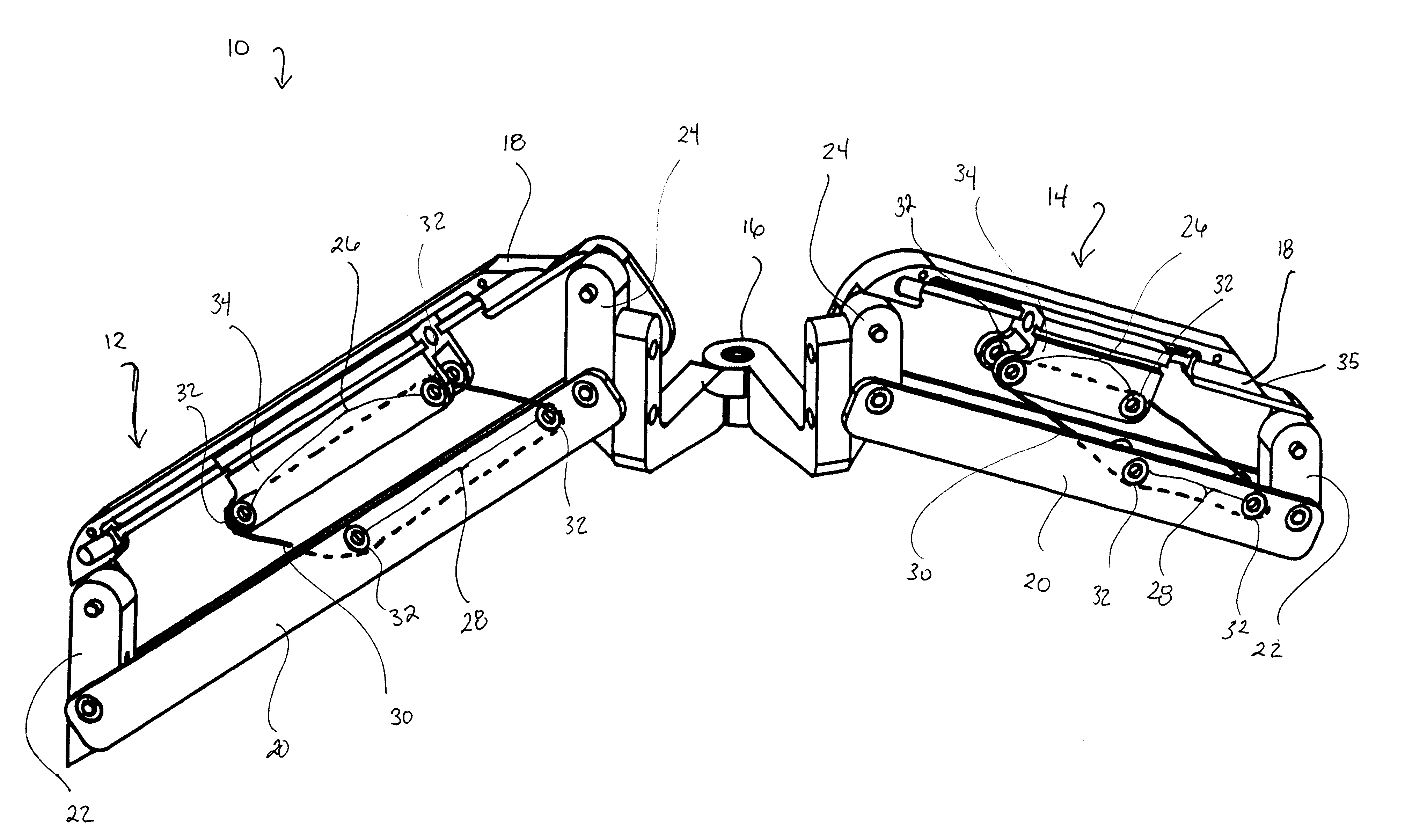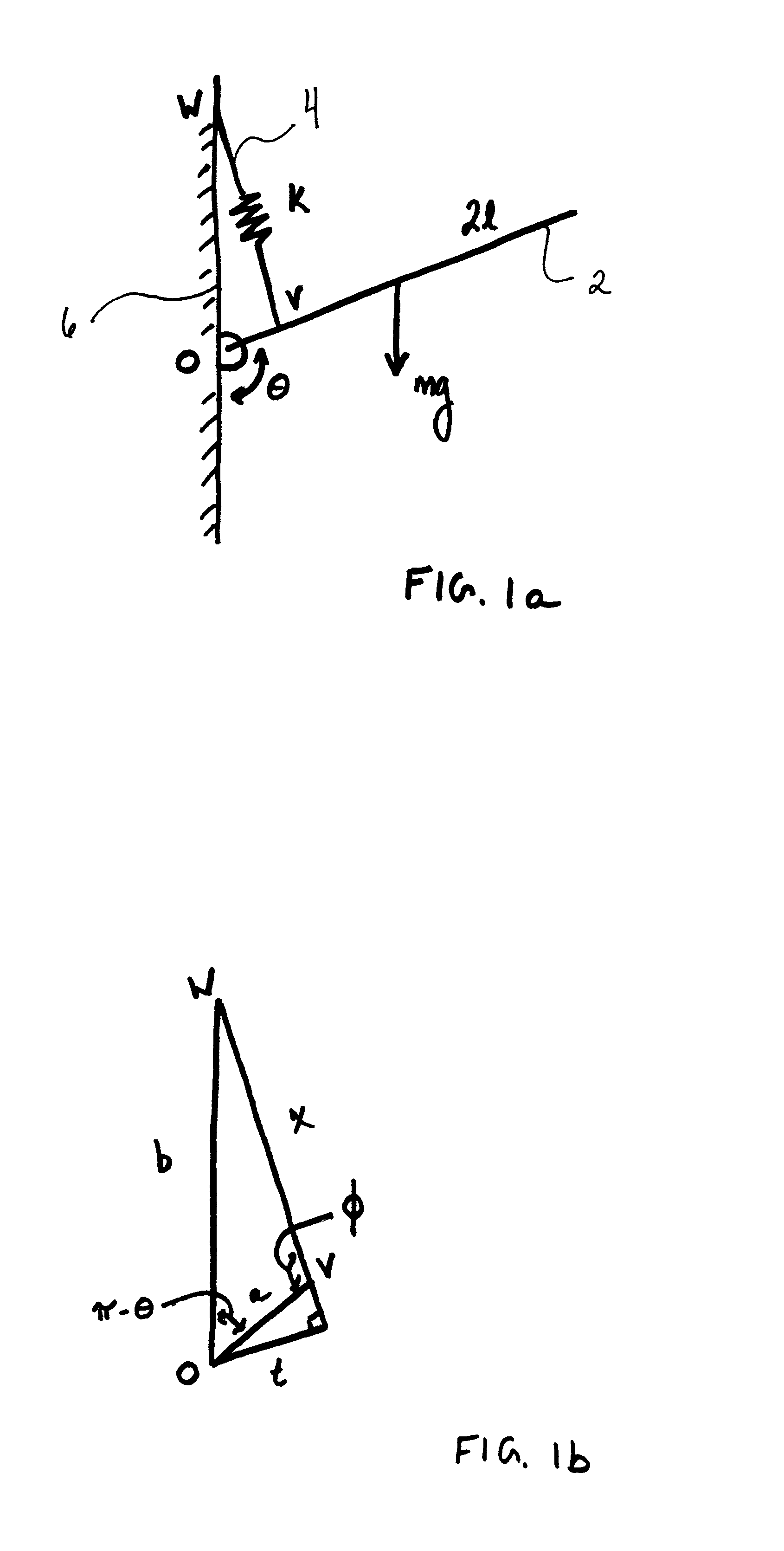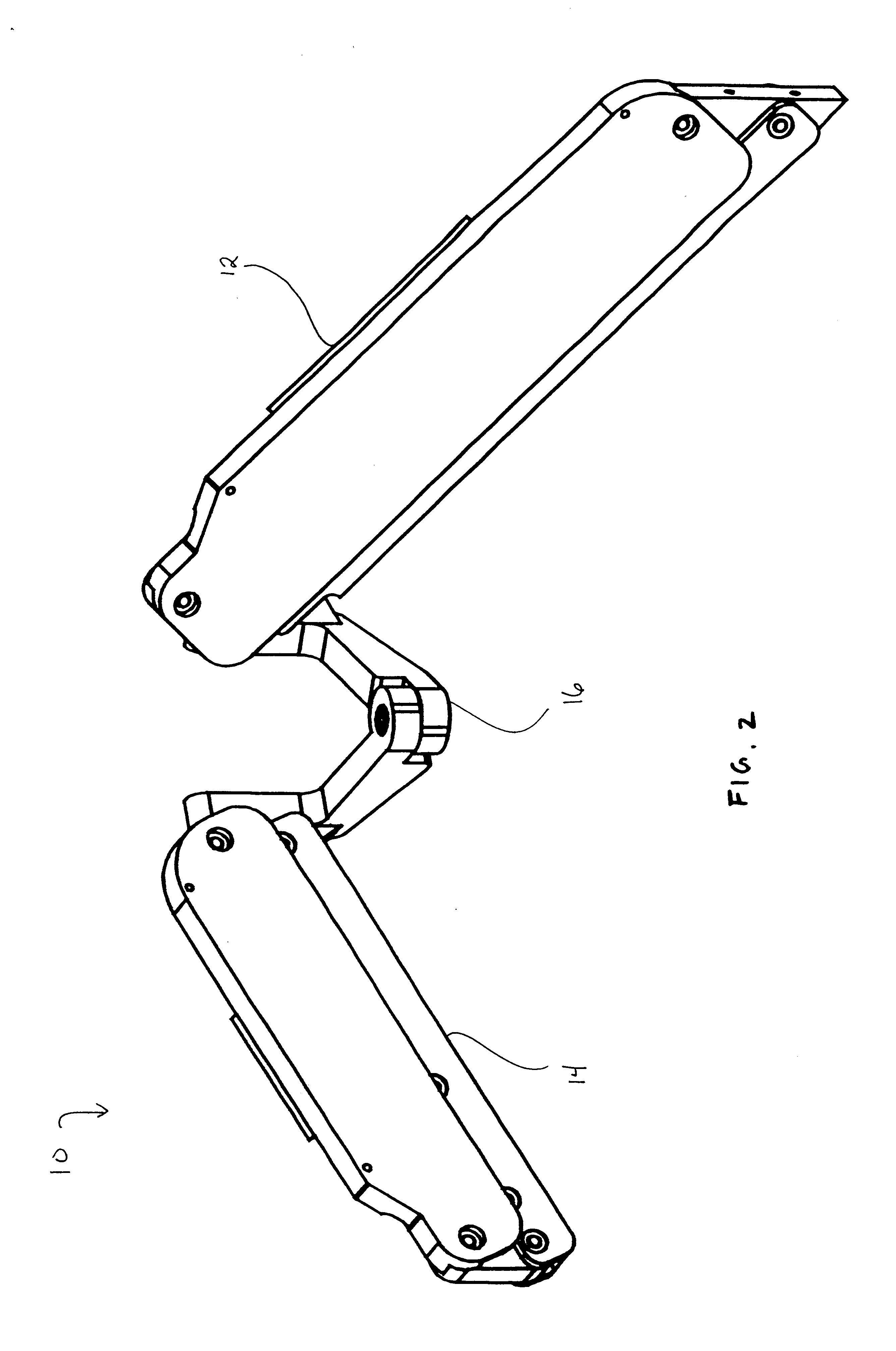Orthosis device
a technology of orthosis and limbs, which is applied in the field of assistive medical devices, can solve the problems of neuromuscular abnormalities, loss of the ability to place the limbs in space, and difficulty in performing routine tasks such as eating
- Summary
- Abstract
- Description
- Claims
- Application Information
AI Technical Summary
Benefits of technology
Problems solved by technology
Method used
Image
Examples
Embodiment Construction
Referring now to the Figures and more particularly to FIGS. 1a and 1b, there is shown a schematic diagram illustrating the gravity-balancing principle utilized by the present invention. FIG. 1a illustrates a rigid link 2 pinned at axis "O" and held by a linear spring 4 at position "V," which is attached to a vertical wall 6 at position "W." Link 2 has a length 2l and mass m, while spring 4 has a spring constant k. For the system to be in equilibrium, M.sub.O, the moment about "O," must be 0. From FIG. 1b, it can be seen that
M.sub.O =mgl sin .theta.-k(x-x.sub.0)t=0.
For .theta..noteq.0, this reduces to ##EQU1##
If x.sub.0 =0, the equation further reduces to
k=mgl / ab. (1)
Equation (1) shows that the stiffness k becomes a constant independent of the angle .theta. of link 2. This is achievable only if the unstretched length x.sub.0 of spring 4 is chosen to be 0. This condition may be physically realized if spring 4 is placed outside the line V-W. Therefore, by choosing a spring 4 of stiffne...
PUM
 Login to View More
Login to View More Abstract
Description
Claims
Application Information
 Login to View More
Login to View More - R&D
- Intellectual Property
- Life Sciences
- Materials
- Tech Scout
- Unparalleled Data Quality
- Higher Quality Content
- 60% Fewer Hallucinations
Browse by: Latest US Patents, China's latest patents, Technical Efficacy Thesaurus, Application Domain, Technology Topic, Popular Technical Reports.
© 2025 PatSnap. All rights reserved.Legal|Privacy policy|Modern Slavery Act Transparency Statement|Sitemap|About US| Contact US: help@patsnap.com



